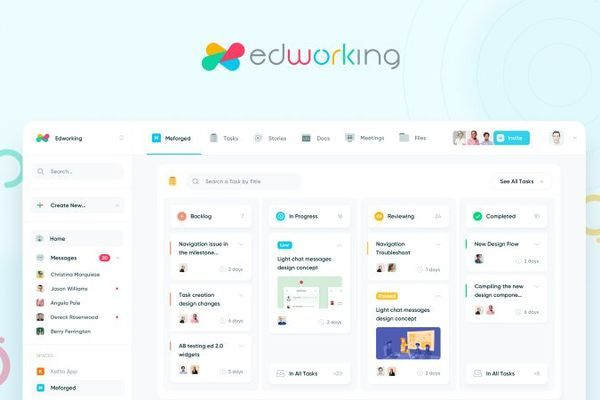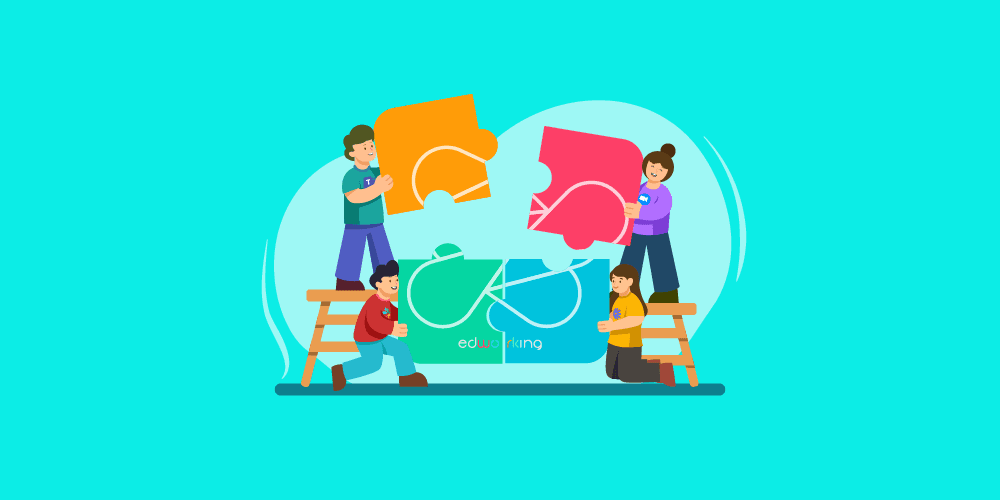In today's fast-paced project environments, risk management has transcended from a mere checkbox in project planning to a central pillar of project success. The ability to identify, assess, and mitigate risks effectively can be the difference between a project's triumph and its downfall. This critical aspect of project management, when handled adeptly, can save not just substantial financial resources but also preserve team morale and project timelines. But how has the landscape of risk management evolved to meet the demands of increasingly complex project scopes and timelines?
Traditionally, risk management was a manual, often tedious process, involving spreadsheets, meetings, and a significant amount of guesswork. Teams would rely on historical data and personal experience to predict and prepare for potential project risks. While these methods have their merits, they are inherently reactive and limited by human bias and the scope of individual experience. Enter the era of AI-powered solutions, heralding a shift from chaos to control in project risk management.

AI and machine learning technologies have revolutionized how we approach risk management in projects. These intelligent systems analyze vast amounts of data, recognize patterns, predict potential issues before they arise, and recommend mitigation strategies. This transition from manual methods to AI-powered solutions marks a significant evolution in the field of project management. The incorporation of AI not only automates and streamlines the risk management process but also enhances decision-making with predictive analytics, offering a proactive approach to identifying and addressing project risks.
The evolution of risk management tools from manual to AI-powered solutions is not just a testament to technological advancement but also reflects a shift in mindset. Project managers and teams are moving towards embracing these intelligent systems to navigate the complexities of modern projects with greater confidence and control. As we delve deeper into the benefits and implementation of AI in risk management, it's clear that the future of project management lies in harnessing the power of AI to transform potential chaos into controlled success.
 The Rise of AI in Risk Management
The Rise of AI in Risk Management
The landscape of project management is experiencing a seismic shift with the advent of artificial intelligence (AI), particularly in the realm of risk management. This section delves into the core of AI-powered risk management, outlining its definition, how it stands apart from traditional methodologies, and the unparalleled benefits it offers to modern projects.
 Understanding AI-Powered Risk Management
Understanding AI-Powered Risk Management
At its core, AI-powered risk management involves the application of artificial intelligence technologies, including machine learning and data analytics, to predict, identify, and mitigate risks in project management. Unlike traditional methods, which largely depend on historical data and the subjective judgment of project managers, AI-powered risk management leverages real-time data and advanced algorithms to offer objective, data-driven insights.
The main distinction between AI-driven and traditional risk management lies in their approaches: while traditional methods are reactive, often addressing risks after they've become apparent, AI-powered risk management is predominantly proactive. It utilizes predictive analytics to foresee risks well before they manifest, enabling project teams to implement preemptive measures.
Key Components of AI in Risk Management
Several key components underpin AI in risk management, ensuring its effectiveness and efficiency:
- Predictive Analytics: Utilizes historical data and AI algorithms to predict potential future risks.
- Data Analytics: Analyzes project data in real-time to identify trends and anomalies that may indicate emerging risks.
- Machine Learning: Continuously learns from new data, improving the accuracy of risk predictions and mitigation strategies over time.
- Natural Language Processing (NLP): Interprets human language within project documents and communication to identify risk-related insights.
The Benefits of AI-Powered Risk Management

Enhanced Predictive Analytics
One of the most significant advantages of AI-powered risk management is its ability to transform vast amounts of project data into actionable insights through enhanced predictive analytics. This capability allows project managers to foresee potential problems before they impact the project, offering a valuable lead time to devise and implement effective mitigation strategies.
Real-time Risk Identification and Mitigation
AI technologies enable continuous monitoring of project activities, ensuring that potential risks are identified in real-time. This immediacy allows for quicker responses, significantly reducing the time it takes to address issues. Moreover, AI can suggest the most effective mitigation strategies based on historical outcomes, thereby not just identifying but also helping to neutralize risks as they arise.
Increased Project Efficiency and Cost Savings
By automating the risk management process, AI reduces the need for manual data analysis, freeing up project managers and teams to focus on more strategic tasks. This efficiency gain not only accelerates the project workflow but also translates to considerable cost savings. Projects can be completed faster and with fewer resources, all while minimizing the likelihood and impact of costly project risks.
 Implementing AI in Your Risk Management Strategy
Implementing AI in Your Risk Management Strategy
Embracing AI in risk management is a game-changer for projects across industries, offering an unprecedented level of insight and control. However, integrating AI into your risk management strategy involves careful planning and consideration. Let's explore the initial steps towards leveraging AI in risk management and best practices for successful integration, including overcoming common challenges.
Starting with AI-Powered Risk Management

Assessing Your Current Risk Management Processes
Before diving into the AI revolution, it’s crucial to evaluate your existing risk management practices. This assessment should aim to identify the strengths and weaknesses of your current approach, understand the specific risks your projects typically face, and pinpoint where AI can make the most significant impact. Such a thorough review will not only highlight areas ripe for improvement but also set a clear benchmark for measuring the added value of AI technologies.
Identifying the Right AI Tools for Your Needs
The AI landscape is vast, with tools designed to tackle various aspects of risk management—from predictive analytics to real-time monitoring. Selecting the right AI solution involves matching the tool's capabilities with your project's specific needs. Consider factors like the size and complexity of your projects, the nature of the risks involved, and your team's technical expertise. Engaging with vendors and participating in demos or trials can provide valuable insights into how well a tool aligns with your requirements.
Best Practices for AI Integration
Training Your Team on AI Tools
Effective AI integration hinges on your team's ability to utilize these tools proficiently. Investing in comprehensive training programs is essential to ensure team members are comfortable and competent in using AI solutions. Training should cover not only the technical aspects of the AI tools but also the interpretation of AI-generated insights and the implementation of recommended actions. A well-trained team can harness the full potential of AI, transforming raw data into strategic decisions.
Setting Up Monitoring and Reporting Mechanisms
To maximize the benefits of AI in risk management, establish robust monitoring and reporting systems. These mechanisms should enable continuous tracking of AI-generated insights and the efficacy of implemented mitigation strategies. Regular reporting can facilitate ongoing evaluation of the AI tools’ impact on project risk management, providing a basis for iterative improvement and fine-tuning of both AI applications and risk management processes.

Overcoming Common Challenges
Data Quality and Availability
A significant challenge in deploying AI for risk management is ensuring access to high-quality, relevant data. AI models are only as good as the data they're trained on. Prioritize the collection and maintenance of accurate, comprehensive project data to fuel your AI tools. Addressing issues related to data silos and integrating disparate data sources can significantly enhance the effectiveness of AI applications.
Ensuring Team Adoption and Trust in AI
Adopting new technologies often meets resistance, and AI is no exception. Building trust in AI’s capabilities involves demonstrating its value and reliability in making informed risk management decisions. Encourage an organizational culture that views AI as a tool for enhancement rather than replacement. Transparent communication about AI's role and its benefits, coupled with the involvement of the team in the integration process, can foster acceptance and trust.
 AI-Powered Risk Management in Action
AI-Powered Risk Management in Action
The implementation of AI in risk management is not just a theoretical concept but a practical reality that has significantly impacted projects across various sectors. This section explores tangible examples of AI-powered risk management success stories and lessons learned from less successful ventures. Additionally, we'll look ahead to the emerging trends and technologies shaping the future of AI in this field.
Real-World Examples

Success Stories of AI in Project Risk Management
Many organizations have witnessed substantial benefits from integrating AI into their risk management strategies. For instance, in the construction industry, AI has been used to predict project delays and cost overruns based on factors such as weather conditions, supply chain disruptions, and workforce availability. One notable success story involves a major infrastructure project that leveraged AI to identify risks associated with material shortages early on, allowing the project team to procure alternative sources and avoid significant delays.
In the financial sector, AI algorithms have revolutionized risk assessment by analyzing vast datasets to identify potential fraud and credit risks before they materialize. Banks and financial institutions have successfully employed AI-powered systems to reduce financial losses and enhance customer trust.
Analysis of Failures and Lessons Learned
Despite many success stories, not all AI implementations in risk management have gone smoothly. One common pitfall has been the reliance on poorly curated or biased data sets, leading to inaccurate risk predictions. For example, an IT project encountered significant setbacks after its AI system failed to account for certain cybersecurity risks, due to the lack of historical data on newly emerging cyber threats. This incident underscores the critical importance of diverse, comprehensive data and continuous model training.
The Future of AI in Risk Management
Emerging Trends and Technologies
The future of AI in risk management is vibrant and dynamic, with several emerging trends poised to further transform the landscape. Advancements in deep learning are enabling more nuanced and sophisticated risk analysis, capable of identifying complex patterns and relationships that were previously undetectable. Additionally, the integration of AI with blockchain technology offers promising avenues for enhancing data security and transparency in risk management processes.
Another notable trend is the development of AI systems capable of simulating potential risk scenarios, providing project teams with virtual environments to test and refine their mitigation strategies before implementing them in the real world.
Predictions for AI's Role in Shaping Risk Management Strategies
As AI technologies continue to evolve, their role in risk management is expected to expand and deepen. Predictive analytics will become even more accurate and actionable, allowing project teams to stay several steps ahead of potential risks. AI's ability to process and analyze real-time data from a myriad of sources will lead to a more dynamic and responsive approach to risk management, enabling immediate adjustments to project plans and strategies as new risks emerge.
Moreover, AI will play a pivotal role in democratizing risk management, making advanced risk analysis tools accessible to projects of all sizes and scopes. This democratization could lead to a significant reduction in project failures and cost overruns across industries, ultimately contributing to more sustainable and successful project outcomes.
 Comparing AI Risk Management Tools
Comparing AI Risk Management Tools
As AI-powered risk management becomes increasingly integral to project success, choosing the right tool becomes paramount. This section will guide you through the essential features to consider in AI risk management solutions and elucidate the main difference between top tools in the market, helping you make an informed decision tailored to your project's needs.

Features to Look for in AI Risk Management Solutions
Selecting an AI risk management tool requires a keen understanding of the features that drive value and enhance risk management processes. Here are several key features to consider:
- Predictive Analytics: The ability to forecast potential risks based on historical data and ongoing project dynamics is fundamental. Look for tools that offer sophisticated predictive models tailored to your industry's specific risk factors.
- Real-Time Monitoring: Effective risk management requires continuous oversight. The best AI tools provide real-time monitoring capabilities, alerting you to potential risks as they emerge.
- Data Integration: Given that project data can be scattered across various platforms and formats, an AI tool that can seamlessly integrate and process data from diverse sources is invaluable.
- Customization and Scalability: Every project has unique risk management needs. A solution that allows for customization and scales with your project size and complexity ensures that the tool remains effective as your project evolves.
- User-Friendly Interface: The complexity of AI shouldn't translate to difficulty in use. A tool with an intuitive interface ensures broader adoption and effectiveness across your team.
- Compliance and Security: Given the sensitive nature of project data, ensure that the AI tool adheres to industry standards for data security and compliance.
The Main Differences Between the Top AI Risk Management Tools
When comparing top AI risk management tools, the main difference often lies in their specialized focus areas and the depth of their capabilities in those areas. For example, some tools might excel in predictive analytics, offering deep insights into potential future risks with high accuracy, making them ideal for projects in highly volatile environments. Others might prioritize real-time risk monitoring and response, providing comprehensive dashboards that track and alert teams to immediate threats, which is crucial for projects with critical real-time data flows.
Additionally, the integration capabilities can vary significantly; some tools are designed to work seamlessly with a wide range of existing project management software, while others may offer more limited integration options but excel in standalone functionality.
Moreover, the extent of customization and scalability can also differentiate these tools. Certain AI solutions are highly customizable, allowing them to be tailored to the specific needs of a project or industry, whereas others might offer a more one-size-fits-all approach but with the advantage of simplicity and ease of implementation.
Choosing the right AI risk management tool involves assessing these differences in the context of your project's specific needs and challenges. By focusing on the features most critical to your risk management strategy and understanding the nuanced differences between top tools, you can select a solution that not only mitigates risks effectively but also enhances overall project performance and success.
 Tying It All Together with Edworking
Tying It All Together with Edworking
In the context of leveraging AI for enhancing project risk management, integrating with a comprehensive project management platform like Edworking can amplify the benefits and streamline the process. Edworking's suite of features offers a conducive environment for AI-powered risk management tools to thrive, thereby enhancing project efficiency, team collaboration, and overall project success. Let's explore how Edworking can serve as the keystone in this innovative approach to risk management.

How Edworking's Features Can Enhance AI-Powered Risk Management

Centralized Data Management
Edworking provides a centralized platform for managing project data, which is crucial for the effective deployment of AI in risk management. The ability to access and analyze project data from a single point enhances the AI's predictive analytics and real-time monitoring capabilities, ensuring that risk identification and mitigation strategies are based on comprehensive and up-to-date information.
Collaborative Environment
AI-powered risk management often requires input and collaboration from various team members. Edworking fosters a collaborative environment where insights generated by AI tools can be easily shared and discussed among team members. This collaborative framework ensures that risk mitigation strategies are developed and implemented efficiently, with input from all relevant stakeholders.
Integration with Other Tools and Platforms
One of Edworking's standout features is its ability to integrate seamlessly with a wide range of other tools and platforms, including AI-powered risk management solutions. This flexibility enables teams to leverage the best AI tools in the market without disrupting their existing workflows. Edworking acts as a hub, connecting different tools and allowing data to flow freely between them, which is essential for the dynamic and complex data analysis required for effective risk management.
Enhanced Communication
Effective communication is key to managing project risks, and Edworking's communication tools ensure that team members are always in sync. Whether it's discussing potential risks identified by AI tools or coordinating mitigation efforts, Edworking's messaging and notification features keep everyone informed and engaged. This timely communication is vital for the rapid response needed to address emerging risks.
In the intricate dance of managing project risks with AI, Edworking plays an instrumental role, not just as a facilitator but as a force multiplier. It enhances the AI's capabilities by ensuring that the data it relies on is comprehensive and up-to-date, fostering a collaborative environment for strategy development, and integrating with other tools for a seamless workflow. Moreover, its communication tools ensure that risk management is a cohesive and coordinated effort across the team.
As projects increasingly embrace AI-powered risk management, the integration with platforms like Edworking will become more critical, offering a seamless, efficient, and effective approach to navigating the complexities of modern project landscapes. By leveraging Edworking's robust features, teams can harness the full potential of AI in risk management, turning potential project chaos into controlled success.
Unlock Creativity with Edworking's Free AI Tools
Edworking offers a variety of free AI tools designed to enhance content writing and social media efforts. These tools include a hook generator for creating engaging beginnings, a YouTube channel description generator, a hashtag generator for various social platforms, and an Instagram caption generator. Additionally, for writing, there are tools like a conclusion generator, paragraph rewriter, paraphrasing tool, and rewording tool to improve text originality and expression. These resources aim to streamline marketing efforts and boost productivity for business professionals, marketers, and content creators. For more details, visit Edworking's AI Tools.
Discover how Edworking can further enhance your project management capabilities by exploring resources such as the Edworking's Paragraph Typing Test for improving communication skills, the free Edworking online Communication Style Quiz for better understanding team dynamics, and the free Edworking online Management Aptitude Test to assess and refine your management skills.
 Conclusion
Conclusion
The journey through AI-powered risk management unveils a transformative landscape where technology elevates project management from reactive measures to proactive success strategies. The integration of AI into risk management processes has marked a pivotal shift, enabling projects to not just navigate but also anticipate the complex web of potential risks they face. As we've explored, the benefits of leveraging AI for risk management are profound and multifaceted.
Recap of the Key Benefits of AI-Powered Risk Management
- Predictive Insights: AI's capability to forecast potential risks before they materialize empowers teams to take preemptive actions, significantly reducing the impact of those risks on project timelines and budgets.
- Real-Time Monitoring: Continuous monitoring allows for the immediate identification and mitigation of risks, ensuring that projects remain on track and within their designated parameters.
- Data-Driven Decisions: With AI, decision-making becomes grounded in data analytics, minimizing biases and enhancing the accuracy of risk assessments.
- Efficiency and Cost Savings: Automating the risk management process not only streamlines operations but also leads to considerable cost savings by avoiding delays and resource misallocations.
- Enhanced Collaboration and Communication: AI facilitates a more cohesive approach to risk management, ensuring all team members are informed and engaged in mitigation strategies.
The integration of platforms like Edworking amplifies these benefits by providing a centralized, collaborative environment where AI-powered insights can be seamlessly integrated into daily project management activities. Edworking’s capacity to merge with other tools and platforms ensures that the transition to AI-enhanced risk management is both smooth and effective, fostering an ecosystem where technology and human expertise coalesce for optimal project outcomes.
Embracing AI for Project Success
As we stand on the cusp of this new era in project management, the invitation to embrace AI-powered risk management is not merely a suggestion but a strategic imperative for any project determined to succeed in the contemporary landscape. The shift from traditional, often cumbersome, risk management practices to a dynamic, AI-driven approach is a leap towards ensuring project resilience, adaptability, and success in an increasingly complex and uncertain world.
In closing, the adoption of AI in risk management is a clear pathway to transforming potential project pitfalls into opportunities for innovation, efficiency, and unparalleled success. Let's embrace AI, not as a distant future, but as a present reality and a foundational tool in our quest for project excellence. The future of project management is not just about managing risks; it's about foreseeing and mastering them, with AI as our guide.







